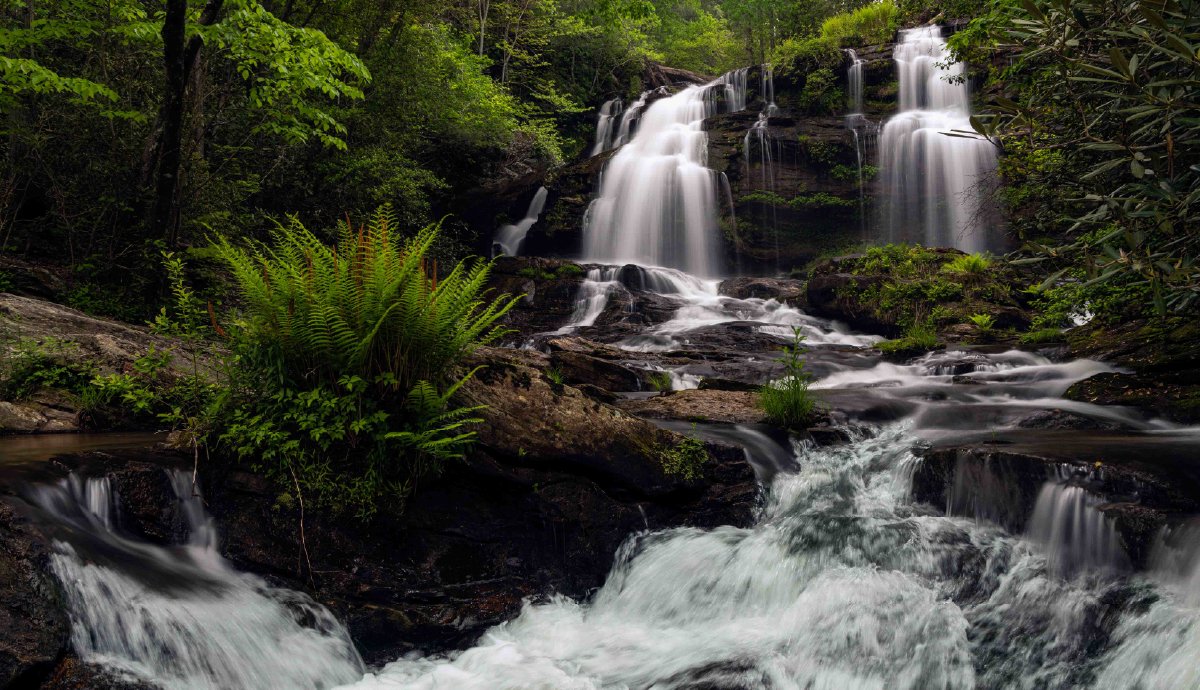
aterfalls are probably one of my favorite things to photograph, especially in the Spring, when leaves are coming out on the trees and everything is looking vibrant. Not every waterfall is photogenic. Factors like the surrounding environment, water flow, and lighting conditions can significantly impact its visual appeal. Some waterfalls may lack interesting features, have unappealing backgrounds, or be located in areas with poor lighting, making them challenging to capture in a compelling and aesthetically pleasing way. I have found that following these tips helps me capture stunning waterfall photos.
1. Choose the Right Time and Lighting: Plan your shoot during the golden hours—shortly after sunrise or before sunset—when the light is soft and warm, creating a magical glow. Cloudy days also offer ideal diffused lighting for waterfall photography. Avoid harsh midday sunlight that can lead to overexposure and harsh shadows.
The right timing can transform a simple waterfall into a breathtaking masterpiece.
2. Use Filters for Contrast and Color: Consider using polarizing filters to reduce glare and enhance contrast in your images. Neutral density (ND) filters can help achieve longer exposures by reducing the amount of light entering the lens, allowing you to capture silky smooth waterfalls even in bright conditions.
3. Opt for Slow Shutter Speeds: To create the classic silky effect of cascading water, use slow shutter speeds. Start with shutter speeds between 1/4 to 1 second for smaller waterfalls and adjust accordingly for larger falls. Use a tripod to stabilize your camera and prevent blur from camera shake during longer exposures.
4. Experiment with Shutter Speed Variations: Mix different shutter speeds in the same frame to add dynamic contrast to your waterfall shots. For instance, use a fast shutter speed to freeze the motion of splashing water in the foreground while using a slower speed to blur the flowing water in the background. This technique adds depth and visual interest to your composition.
5. Compose with Care: Pay attention to your composition to create compelling waterfall photos. Consider including elements such as rocks, foliage, or surrounding landscape to provide context and scale. Experiment with different angles—shoot from low angles to emphasize the height of the waterfall or capture reflections in calm pools of water.
6. Adjust Aperture for Depth of Field: Use a smaller aperture (higher f-stop number) like f/8 to f/16 to achieve a greater depth of field, keeping both the waterfall and foreground/background in sharp focus. This is particularly useful when incorporating surrounding elements into your composition.
7. Bracket Exposures for HDR: In high-contrast scenes with bright water and dark shadows, bracket exposures to capture a range of tones. Merge these exposures using HDR (High Dynamic Range) techniques during post-processing to retain details in highlights and shadows for a balanced and realistic image.
8. Experiment and Be Patient: Photography is a creative process, so don’t be afraid to experiment with different settings and techniques. Be patient and take multiple shots from various angles to find the best composition and lighting conditions. Post-processing software like Adobe Lightroom and Photoshop can further enhance your waterfall photos by fine-tuning colors, contrast, and details.
y combining these tips and techniques, you can capture breathtaking waterfall photos that showcase the beauty and dynamic nature of cascading water. You can check out my favorite waterfall photos by visiting my site at Fine Art Photography.
Annie Lazo
I am a landscape photographer who finds joy in capturing the natural beauty of this world. From the magical mountains of the East Coast to the majestic peaks of the American West, I seek to share these breathtaking vistas with as many people as possible. I also enjoy photographing waterfalls, wildlife, and plant life.
Annie Lazo
I am a landscape photographer who finds joy in capturing the natural beauty of this world. From the magical mountains of the East Coast to the majestic peaks of the American West, I seek to share these breathtaking vistas with as many people as possible. I also enjoy photographing waterfalls, wildlife, and plant life.




